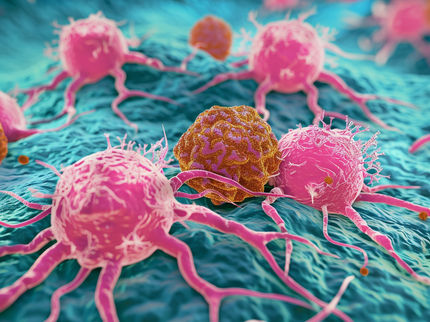Gene fusion in lung cancer afflicting never-smokers may be target for therapy
Smoking is a well-known risk factor for lung cancer, but nearly 25% of all lung cancer patients have never smoked. In a study published in Genome Research, researchers have identified a previously unknown gene fusion event that could explain a significant proportion of lung cancer cases in never-smokers, and might serve as a target for new therapies.
Recent strides have been made to identify gene mutation events driving cases of lung adenocarcinoma in never-smokers, but the underlying genetic events leading to these lung cancers still remain unknown in a large number of cases. In this report, using a combination of genome sequencing and RNA sequencing, a team of researchers in South Korea has characterized a previously unknown gene fusion event in a case of lung adenocarcinoma striking a 33-year-old Korean male with no history of smoking or cancer within his family.
The group sequenced and compared the genome of the patient’s cancer and normal tissue (blood), but they found no mutations in known-cancer related genes, such as EGFR , KRAS and EML4-ALK mutations, that were likely to explain this case. Delving deeper, they also sequenced RNA isolated from the cancer cells, which when analyzed, can reveal gene rearrangement events that are difficult to detect by genome sequencing and may be driving the cancer.
From the RNA sequencing analysis they built a list of candidate gene fusions, narrowing it down to a single gene fusion that could be a cancer-causing event. A genomic inversion event occurred on chromosome 10 in the cancer, fusing the KIF5B and RET genes. This fusion was particularly interesting because RET has been previously implicated in other gene fusion events known to drive thyroid cancers, and although it is normally expressed at low levels in the lung, chimeric RET in this patient is highly expressed. Furthermore, KIF5B contains a protein domain that is necessary for activation of the fusion gene.
They then confirmed that the KIF5B-RET fusion occurs in other lung cancer cases, finding two instances in twenty additional cases of lung cancer, indicating that this fusion event is not rare. The authors suggest that the KIF5B-RET fusion occurs in about 6% of all lung adenocarcinoma cases. The authors note that although further epidemiological studies are needed to accurately define the frequency of KIF5B-RET in lung cancers, they expect that the fusion gene may be a promising molecular target for treatment.
“We showed that genome sequencing technology could reveal a previously hidden cause of human cancer, which can be used as a therapeutic target for personal cancer therapy”, said Dr. Jeong-Sun Seo, director of the Genomic Medicine Institute-Seoul National University, chairman of Macrogen Inc., and senior author of the study.
Original publication
Ju YS, Lee W, Shin J, Lee S, Bleazard T, Won J, Kim YT, Kim J, Kang J, Seo J.; "Fusion of KIF5B and RET transforming gene in lung adenocarcinoma revealed from whole-genome and transcriptome sequencing."; Genome Res.
Original publication
Ju YS, Lee W, Shin J, Lee S, Bleazard T, Won J, Kim YT, Kim J, Kang J, Seo J.; "Fusion of KIF5B and RET transforming gene in lung adenocarcinoma revealed from whole-genome and transcriptome sequencing."; Genome Res.
Organizations
Other news from the department science

Get the life science industry in your inbox
By submitting this form you agree that LUMITOS AG will send you the newsletter(s) selected above by email. Your data will not be passed on to third parties. Your data will be stored and processed in accordance with our data protection regulations. LUMITOS may contact you by email for the purpose of advertising or market and opinion surveys. You can revoke your consent at any time without giving reasons to LUMITOS AG, Ernst-Augustin-Str. 2, 12489 Berlin, Germany or by e-mail at revoke@lumitos.com with effect for the future. In addition, each email contains a link to unsubscribe from the corresponding newsletter.





















































